A programmable Turing-machine with implemented Busy Beaver. Default example is 2-symbol, 4-state BB
- mySketch
xxxxxxxxxx// Turing machine programming :/* i-th row of 'rules' is i-th state. In each row: 0th element - what to write to tape if current cell is 0 1st element - where to move if current cell is 0 (0 - left, 1 - right) 2nd element - which state to go to if current cell is 0 (-1 is the halt state) 3rd element - what to write to tape if current cell is 1 4th element - where to move if current cell is 1 (0 - left, 1 - right) 5th element - which state to go to if current cell is 1 (-1 is the halt state)*/// let rules = [[0, 1, 1, -1, 0, 0, 0]] // busy beaver (2-symbol, 1-state)// let rules = [[0, 1, 1, 1, 1, 0, 1], // busy beaver (2-symbol, 2-state)// [1, 1, 0, 0, 1, 1, -1]]// let rules = [[1, 1, 1, 1, 1, -1], // busy beaver (2-symbol, 3-state)// [0, 1, 2, 1, 1, 1],// [1, 0, 2, 1, 0, 0]];let rules = [[1, 1, 1, 1, 0, 1], // busy beaver (2-symbol, 4-state) [1, 0, 0, 0, 0, 2], [1, 1, -1, 1, 0, 3], [1, 1, 3, 0, 1, 0]];// let rules = [[0, 1, 1, 1, 1, 0, 2], // busy beaver (2-symbol, 5-state)// [1, 1, 1, 2, 1, 1, 1],// [2, 1, 1, 3, 0, 0, 4],// [3, 1, 0, 0, 1, 0, 3],// [4, 1, 1, -1, 0, 0, 0]];let num_cells = 255;let side;let tape, new_tape;let head, ix_head, new_ix_head;function setup() { createCanvas(windowWidth, windowHeight); background(100); // print(height/30); side = height/16; button_up = createButton('SPEED +'); button_up.position(19, 19); button_up.mousePressed(tape_speed_up); button_down = createButton('SPEED -'); button_down.position(19, 45); button_down.mousePressed(tape_speed_down); tape = Array(num_cells).fill(0); new_tape = tape.slice() head = tape[ix_head]; ix_head = floor(num_cells/2);}let ix_rule = 0;let delta = 0;let steps = 0;let offset = 0.0;let tape_speed = 1;function draw() { rectMode(CENTER); translate(width/2, height/2); scale(1, -1); background(100); if (ix_rule != -1) { // if not halted let head = tape[ix_head]; if (head == 0) { new_tape[ix_head] = rules[ix_rule][0]; // write a new symbol and move accordingly let move; if (rules[ix_rule][1] == 0) { move = tape_speed; new_ix_head = ix_head - 1;} else { move = -tape_speed; new_ix_head = ix_head + 1;} if (delta < side){ // make transitions smooth delta = delta + move; offset = offset + move;} } else if (head == 1) { new_tape[ix_head] = rules[ix_rule][3]; let move; if (rules[ix_rule][4] == 0) { move = tape_speed; new_ix_head = ix_head - 1;} else { move = -tape_speed; new_ix_head = ix_head + 1;} if (delta > -side){ delta = delta + move; offset = offset + move;} } if ((delta >= side) || (delta <= -side)) // once the head moved by a cell-sized amount { // transition into a new state if (head == 0) ix_rule = rules[ix_rule][2]; if (head == 1) ix_rule = rules[ix_rule][5]; delta = 0; if (ix_rule != -1) tape = new_tape.slice(); ix_head = new_ix_head; steps += 1; } } if (ix_rule == -1) { let discrepancy = offset%side; offset -= discrepancy; } // draw tape for (let i=-floor(num_cells/2); i<=floor(num_cells/2); i++) rect(i*side + offset, 0, side, side); // head circle(0, -side, 10); scale(1, -1); // draw symbols textSize(height/21); fill(0); let num_ones = 0; for (let i=-floor(num_cells/2); i<=floor(num_cells/2); i++) { let j = i+floor(num_cells/2); let symbol = new_tape[j]; if (symbol == 1) num_ones += 1; text(symbol, i*side + offset - side/5, side/5); } fill(255); textSize(1.5*height/21); text("Steps: " + steps, -width/2.732, -height/3.225); text("Number of 1's: " + num_ones, -width/2.732, -height/4.607); translate(-width/2, -height/2);}function tape_speed_up() { if (tape_speed < 8) tape_speed += 1;}function tape_speed_down() { if (tape_speed > 1) tape_speed -= 1;}- v1.11.3
- v1.11.2
- v1.11.1
- v1.11.0
- v1.10.0
- v1.9.4
- v1.9.3
- v1.9.2
- v1.9.1
- v1.9.0
- v1.8.0
- v1.7.0
- v1.6.0
- v1.5.0
- v1.4.2
- v1.4.1
- v1.4.0
- v1.3.1
- v1.3.0
- v1.2.0
- v1.1.9
- v1.1.7
- v1.1.5
- v1.1.4
- v1.1.3
- v1.0.0
- v0.10.2
- v0.9.0
- v0.8.0
- v0.7.3
- v0.7.2
- v0.6.1
- v0.6.0
- v0.5.16
- v0.5.11
- v0.5.8
- v0.5.7
- v0.5.2


